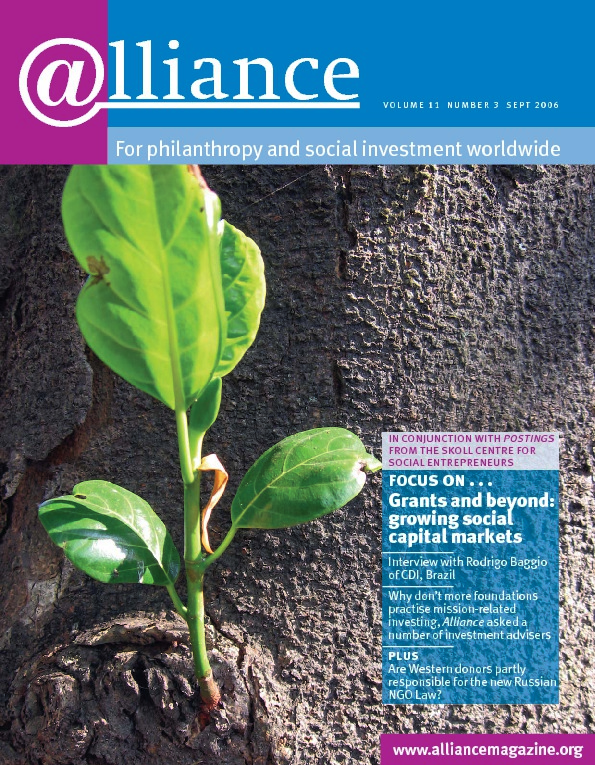In the aftermath of the Second World War, mass mobilizations swept the African continent, as people in villages, farms and cities demanded the right of self-determination and an end to colonial subjugation. The independence governments that were subsequently swept into power proposed that the path to self-determination should be through what Western governments described as ‘development’, seen as the universal panacea for the problems of ‘underdevelopment’.
Despite the haziness of the term, it had a certain progressive ring – implicit in the idea of development was that of emancipation, which had inspired millions to support the movement for independence. And it was in this that the modern missionaries – the development NGOs – found their raison d’être.
By the end of the 20th century, the appeal of development had waned. Twenty years of structural adjustment programmes had reversed nearly all the gains of independence, removing the right of African people to determine their own social and economic policies, rendering their governments less and less accountable. Development NGOs were experiencing a crisis of credibility as their development programmes came to be perceived as part of the so-called ‘Washington consensus’ agenda.
Development had lost its emancipatory appeal. It was in need of reinvention. Amartya Sen was probably among the first to recognize this in his call to reassert the link between development and freedom.[1] Others gradually took up the cry, until even the World Bank became a proponent of ‘the rights-based approach to development’. The appeal was obvious: human rights has – as development once had – an association with something that is implicitly participatory and emancipatory.
But has the new dogma changed anything in practice? Has it led to poverty being recognized as a massive human rights violation that kills millions prematurely every year? Has it resulted in bringing to account those who are responsible for and benefit from the impoverishment of humanity? Has it resulted in international agencies supporting movements claiming reparations for injustices? Has it meant resources being allocated to popular movements so they can exercise their collective power in support of their claims or defend themselves against attacks? What real difference has it made to the struggle for emancipation – the right to determine one’s one future? With some notable exceptions, there were few answers to be found in this book.
This collection of essays does, however, provide a remarkable insight into the current discourse among international development agencies about something that appears to be the new universal panacea for the poor. It shows that, like the term ‘development’ before it, the human rights approach to development has come to mean anything and everything to everyone.
For UNICEF, it is essentially an effective programming tool; for Oxfam International, it is business as usual, but recast using the new rhetoric. For CARE International in Rwanda, it provides a different analytical framework for its work but the solutions seem drearily similar to conventional approaches to development. In Afghanistan, the rights-based approach is seen as necessary not so much to defend the rights of Afghanis but primarily as an advocacy tool (and, some might say, for strengthening negotiation for funds).
For ActionAid, the rights-based approach is radically different: they show that rights are fundamentally about enabling the poor and disenfranchised to organize, and thereby use their collective power in their own interest. Instead of the traditional charitable and humanitarian response to the earthquake and communal violence in Gujarat, they understood the ‘need to take sides unambiguously with the poor’. The need for political action in relation to children’s participation is more cautiously acknowledged in Save the Children’s case study from Nepal.
Two valuable essays in this book seem strangely out of place. Ghalib Galant and Michelle Parlevliet from the South African Centre for Conflict Resolution make a strong argument for why conflict prevention and the struggle for human rights are inextricably linked – though how this relates to the rights-based approach to development is not made entirely clear. An excellent essay by Neil Jarman on human rights and peace-building in Northern Ireland discusses how human rights have moved to centre stage following the paramilitary ceasefire – though the term ‘rights-based approach to development’ is not once mentioned!
In addition to a series of case studies, there are more discursive essays on the concept of the rights-based approach – the introductory essay by the editors, an essay by Harsh Mander, an essay on rights and culture by Jonathan Ensor, and a helpful summary and conclusion by Olivia Ball. I was struck by the fact that none of these essays sought to address the nature and scale of human rights violations taking place in so-called developing countries. Injustice, crimes against humanity, genocide, gender-based violence, child abuse, war, torture, occupation, the use of state-sponsored terror and its mirror image of non-state terror – topics that are the normal focus of human rights discourse – were mentioned at best only peripherally, if at all. Do these subjects have no relevance to the discourse on rights and development? Their absence lends weight to the sense that the discourse on rights-based development is just a new spin on an old, and rather discredited, concept of development.
1 Amartya Sen (1999) Development as Freedom Oxford: OUP.
Firoze Manji is Executive Director of Fahamu and editor of Pambazuka News. Email firoze@fahamu.org
Reinventing Development: Translating rights-based approaches from theory into practice
Paul Gready and Jonathan Ensor (eds) Zed Books £16.95
ISBN 1842776495
To order
Contact Zed Books.
Website http://www.zedbooks.co.uk
In the USA, contact Palgrave.
Website http://www.palgrave-usa.com






Comments (0)